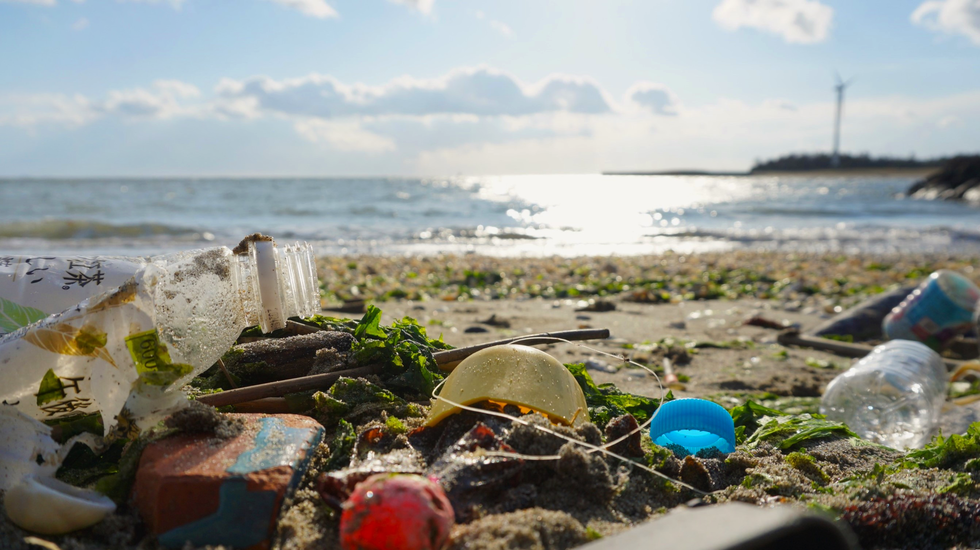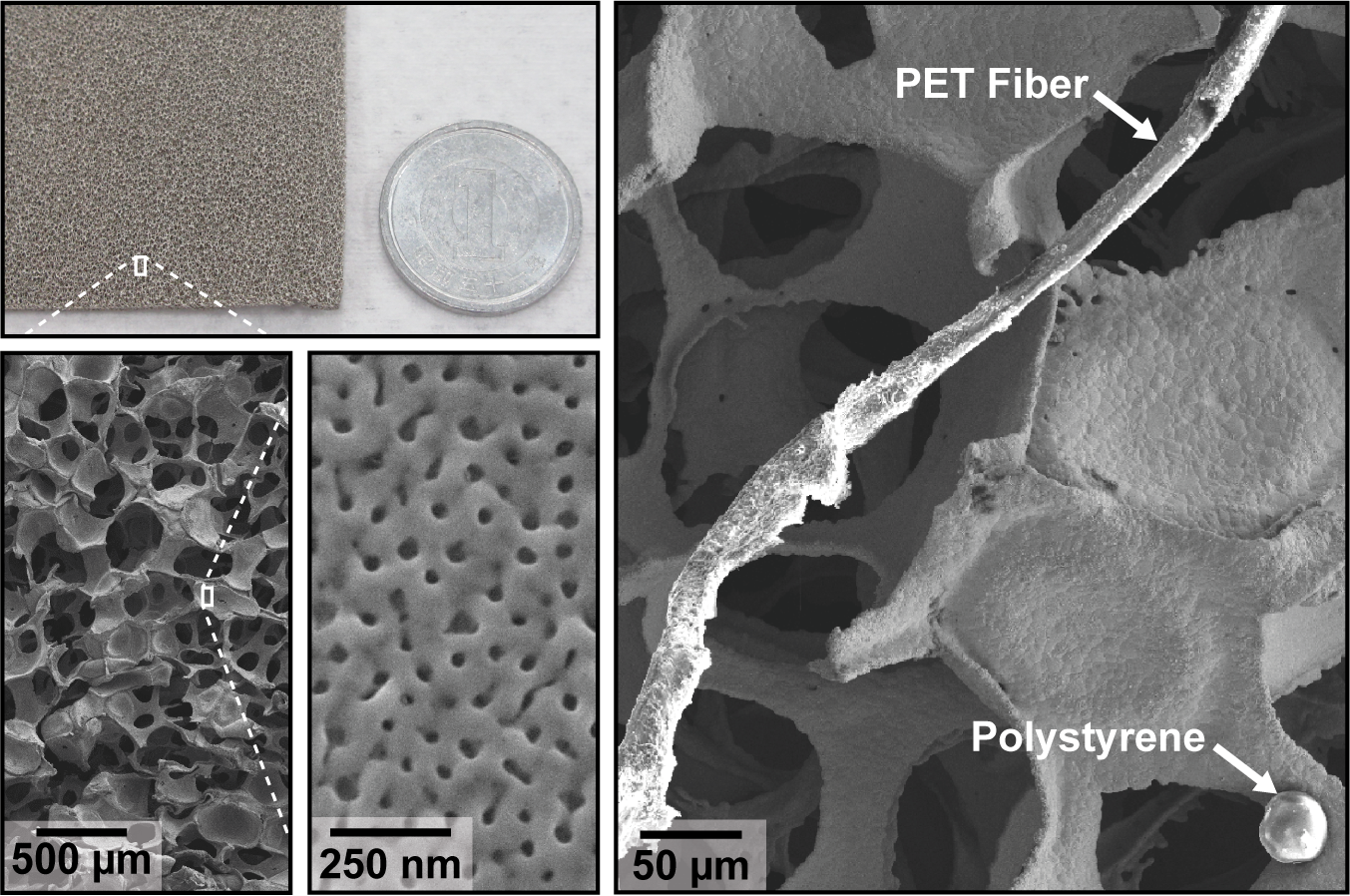
Chemistry
May 29, 2024
Inexpensive microplastic monitoring through porous materials and machine learning
Optical analysis and machine learning techniques can now readily detect microplastics in marine and freshwater environments using inexpensive porous metal substrates. Details of the method, developed by researchers at Nagoya University with collaborators at the National Institute for Materials Sciences in Japan and others, are published in the journal Nature Communications.
Detecting and identifying microplastics in water samples is essential for environmental monitoring but is challenging due in part to the structural similarity of microplastics with natural organic compounds derived from biofilms, algae, and decaying organic matter. Existing detection methods generally require complex separation techniques that are time-consuming and costly.
“Our new method can simultaneously separate and measure the abundance of six key types of microplastics - polystyrene, polyethylene, polymethylmethacrylate, polytetrafluoroethylene, nylon and polyethylene terephthalate,” says Dr. Olga Guselnikova of the National Institute for Materials Science (NIMS).

Upper left: Metal foam and a 1-yen coin for scale.
Bottom left: SEM image of a silver foam showing macropores used to capture microplastics from solution.
Bottom middle: SEM image of the nanoscale pores used to capture light and enhance the chemical signal of the microplastics.
Right: SEM image of the metal foam exposed to polystyrene beads, PET fibers, algae and soil.
(credit: Olga Guselnikova and Joel Henzie)
The system uses a porous metal foam to capture microplastics from solution and detect them optically using a process called surface-enhanced Raman spectroscopy (SERS). “The SERS data obtained is highly complex,” explains Dr. Joel Henzie of NIMS, “but it contains discernible patterns that can be interpreted using modern machine learning techniques.”
To analyse the data, the team created a neural network computer algorithm called SpecATNet. This algorithm learns how to interpret the patterns in the optical measurements to identify the target microplastics more quickly and with higher accuracy than traditional methods.

An unknown liquid sample containing various microplastics (left) is passed over the porous metal surface. Raman spectroscopy is then performed on the metal foam surface (right), and the scattered light is analyzed with a machine learning algorithm trained to accurately identify microplastics in complex mixtures. (credit: Olga Guselnikova)
“Our procedure holds immense potential for monitoring microplastics in samples obtained directly from the environment, with no pretreatment required, while being unaffected by possible contaminants that could interfere with other methods,” says Professor Yusuke Yamauchi of Nagoya University.
The researchers hope their innovation will greatly assist society in evaluating the significance of microplastic pollution on public health and the health of all organisms in marine and freshwater environments. By creating inexpensive microplastic sensors and open-source algorithms to interpret data, they hope to enable the rapid detection of microplastics, even in resource-limited labs.
Currently, materials required for the new system bring cost savings of 90 to 95% compared to commercially available alternatives. The group plans to drive the cost of these sensors down even further and make the methods simple to replicate without the need for expensive facilities. In addition, the researchers hope to expand the capability of the SpecATNet neural network to detect a broader range of microplastics and even accept different kinds of spectroscopic data in addition to SERS data.
The study, “Pretreatment-free SERS sensing of microplastics using a self-attention-based neural network on hierarchically porous Ag foams,” was published in Nature Communications on May 28, 2024, at DOI: 10.1038/s41467-024-48148-w.
Authors:
Olga Guselnikova, Andrii Trelin, Yunqing Kang, Pavel Postnikov, Makoto Kobashi, Asuka Suzuki, Lok Kumar Shrestha, Joel Henzie, Yusuke Yamauchi
Researchers of the study (from left): Yusuke Yamauchi (Distinguished Professor of Nagoya University Graduate School of Engineering), Olga Guselnikova (Former JSPS Researcher),
and Makoto Kobashi (Professor and Dean of Nagoya University Graduate School of Engineering)
(credit: Yusuke Yamauchi)
Media Contact:
Matthew Linley
International Communications Office, Nagoya University
Email: icomm_research@t.mail.nagoya-u.ac.jp
Top image:Inexpensive microplastic monitoring through porous materials and machine learning (credit: Reiko Matsushita)